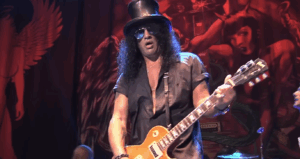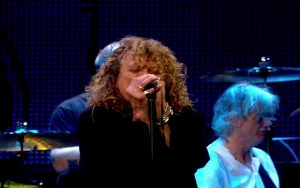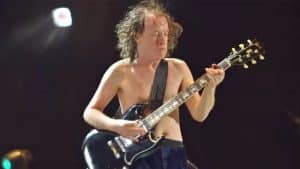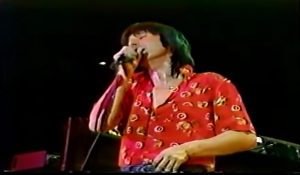The Greatest Bands That Came Out Of Electric Lady Studios
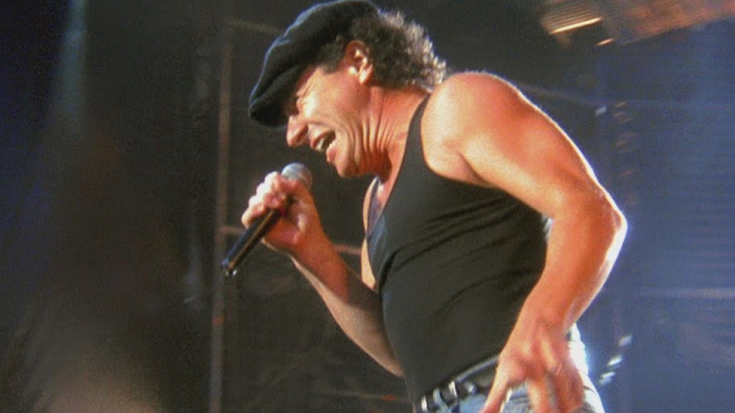
via AC/DC / YouTube
Tucked into the heart of Greenwich Village, Electric Lady Studios has become more than just a recording space—it’s a creative sanctuary where some of the most influential bands in rock history have shaped their sound. Designed with artistic freedom in mind, the studio was envisioned by Jimi Hendrix as a place where musicians could push boundaries and capture something raw and real. The energy of those walls has drawn artists back decade after decade.
Though Hendrix had only a short time to experience the space he helped bring to life, the studio’s impact has echoed far beyond his era. From analog warmth to digital evolution, Electric Lady has adapted without losing its soul. That balance—between honoring the past and embracing the future—has made it a home for many greats across generations.
Some of the most iconic records in rock history have come to life within its colorful walls. The bands that recorded there weren’t just using top-tier equipment; they were stepping into a kind of legacy. Below, we’ll revisit the legendary groups whose time at Electric Lady Studios helped define their careers—and, in many cases, the sound of their time.
Back In Black – AC/DC (1980)
By the time AC/DC walked into Electric Lady Studios in 1980, they were a band in transition. The tragic death of lead singer Bon Scott earlier that year left fans wondering what the future would hold. Rather than retreat, the band made a bold move, recruiting Brian Johnson as their new frontman and heading to New York to record what would become a career-defining album.
Back In Black wasn’t just a tribute to their late bandmate—it was a creative explosion. Electric Lady Studios gave AC/DC the space and sonic clarity they needed to reimagine their sound while staying true to their roots. The walls that once echoed with Hendrix’s psychedelic riffs now reverberated with raw, electrified rock anthems like “Hells Bells” and “You Shook Me All Night Long.”
The result was nothing short of legendary. Back In Black went on to become one of the best-selling albums in rock history. It marked a turning point not just for the band, but for the studio itself, affirming Electric Lady’s place as a creative incubator capable of channeling both grief and grit into something unforgettable.
Houses of the Holy – Led Zeppelin (1973)
Led Zeppelin’s Houses of the Holy may have drawn from a variety of recording locations, but its heart and final form were shaped inside Electric Lady Studios. By 1973, the band was already a towering force in rock music, and the studio offered them the right blend of technical resources and creative freedom to explore new musical directions.
The album showcased a more experimental side of Zeppelin, moving beyond the blues-heavy riffs of their earlier records. Tracks like “The Rain Song” and “No Quarter” featured layered textures and ambitious arrangements. Electric Lady’s cutting-edge gear and acoustics played a key role in capturing the complexity of those sounds without losing the band’s signature intensity.
While some songs were born elsewhere, Electric Lady was where the album truly came together—and its influence extended beyond just Houses of the Holy. Parts of Physical Graffiti were also recorded there, further cementing the studio’s importance in Led Zeppelin’s sonic evolution during their golden era.
Weezer (Blue Album) – Weezer (1994)
In the early ’90s, grunge was king, but Weezer arrived with something entirely different. Their 1994 debut, now affectionately known as the Blue Album, was recorded at Electric Lady Studios with Ric Ocasek of The Cars producing. The blend of nerdy charm, catchy hooks, and crunchy guitar tones gave the album a personality all its own.
Electric Lady proved to be a fertile ground for capturing that unique sound. Under Ocasek’s guidance and with the studio’s finely tuned acoustics, tracks like “Buddy Holly” and “Say It Ain’t So” were brought to life with precision and polish. The studio allowed the band to strike a rare balance between raw energy and radio-ready production.
Though Weezer has released many albums since, the Blue Album remains their most beloved by fans and critics alike. It set the tone for their identity and carved out a niche that stood in contrast to the prevailing trends of the time—something Electric Lady has helped many artists accomplish over the decades.
Destroyer – KISS (1976)
KISS entered Electric Lady Studios in 1976 with a mission to evolve. Known for their bombastic stage shows and raw, aggressive sound, the band took a risk with Destroyer—an album that veered toward theatricality and layered production, with Bob Ezrin behind the console guiding the transformation.
Electric Lady provided the ideal setting for this shift. With Ezrin pushing the band beyond their comfort zones and the studio offering top-tier resources, Destroyer became a carefully crafted album featuring choirs, orchestration, and a more cinematic feel. “Detroit Rock City” and “Beth” highlighted KISS’s newfound range while still delivering rock spectacle.
The gamble paid off. Destroyer was a commercial triumph, quickly earning gold certification and bringing the band to new mainstream heights. For KISS, it marked a reinvention—and for Electric Lady Studios, it was another notch in its legacy of fostering artistic reinvention while maintaining the integrity of rock and roll.




